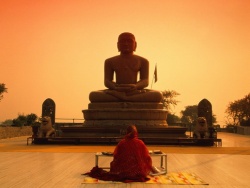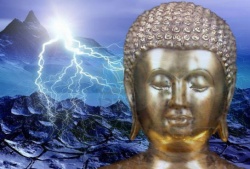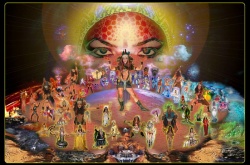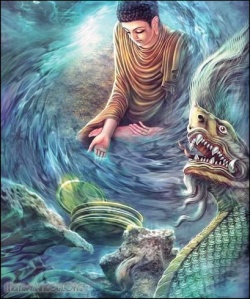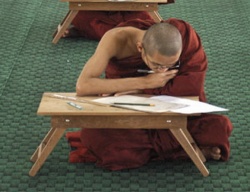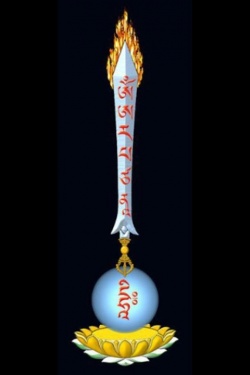Charaka
Charaka (Sanskrit Caraka) was one of the principal contributors to the ancient art and science of Ayurveda, a system of medicine and lifestyle developed in Ancient India.
He is famous for authoring the medical treatise the Charaka Samhita.
Charaka has been identified as a native of Kashmir. He is well known as the "father of medicine.
Charaka and the Ayurveda
The term Charaka is a label said to apply to "wandering scholars" or "wandering physicians".
According to Charaka's translations, health and disease are not predetermined and life may be prolonged by human effort and attention to lifestyle.
As per Indian heritage and Ayurvedic system, prevention of all types of diseases have a more prominent place than treatment, including restructuring of lifestyle to align with the course of nature and four seasons, which will guarantee complete wellness.
Charaka seems to have been an early proponent of "prevention is better than cure" doctrine. The following statement is attributed to Acharya Charaka:
A physician who fails to enter the body of a patient with the lamp of knowledge and understanding can never treat diseases.
He should first study all the factors, including environment, which influence a patient's disease, and then prescribe treatment. It is more important to prevent the occurrence of disease than to seek a cure.
Charaka contributions to the fields of physiology, etiology and embryology have been recognised.
Charaka is generally considered as the first physician to present the concept of digestion, metabolism and immunity.
A body functions because it contains three dosha or principles, namely movement (vata), transformation (pitta) and lubrication and stability (kapha).
The doshas correspond to the Western classification of humors, bile, phlegm and wind. These doshas are produced when dhatus (blood, flesh and marrow) act upon the food eaten.
For the same quantity of food eaten, one body, however, produces dosha in an amount different from another body. That is why one body is different from another.
Further, he stressed, illness is caused when the balance among the three doshas in a human body are disturbed. To restore the balance he prescribed medicinal drugs.
Although he was aware of germs in the body, he did not give them any importance.
Charaka studied the anatomy of the human body and various organs.
He gave 360 as the total number of bones, including teeth, present in the human body.
He wrongly believed that the heart had one cavity, but he was right when he considered it to be a controlling centre. He claimed that the heart was connected to the entire body through 13 main channels.
Apart from these channels, there were countless other ones of varying sizes which supplied not only nutrients to various tissues but also provided passage to waste products. He also claimed that any obstruction in the main channels led to a disease or deformity in the body.
Agnivesa, under the guidance of the ancient physician Atreya, had written an encyclopedic treatise in the 8th century B.C. However, it was only when Charaka revised this treatise that it gained popularity and came to be known as Charaka Samhita.
For two millennia it remained a standard work on the subject and was translated into many foreign languages, including Arabic and Latin.
Contributions
He is the author of the Charaka Samhita, which has survived in the Bower Manuscript dated to around 4th century. However, the manuscript is believed to be an edition by Dṛḍhabala, the original work by Charaka is a few centuries older.
The Charaka Samhita is one of the two foundational text of Ayurveda, the other being the Sushruta Samhita.
The Charaka Samhita contains 120 adhyayas (chapters) divided into eight parts.
Influences
According to the Charaka tradition, there existed six schools of medicine, founded by the disciples of the sage Punarvasu Ātreya.
Each of his disciples, Agnivesha, Bhela, Jatūkarna, Parāshara, Hārīta, and Kshārapāni, composed a Samhitā.
Of these, the one composed by Agnivesha was considered the best. The Agnivesha Samhitā was later revised by Charaka and it came to be known as Charaka Samhitā. The Charaka Samhitā was revised by Dridhbala.
Sutra Sthana
Nidan Sthana
Viman Sthana
Sharir Sthana
Indriya Sthana
Chikitsa Sthana
Kalpa Sthana
Siddhi Sthana
There were 8 main chapters in this book.
There had been 120 sub chapters of which they all in total had 12,000 shlokas and description of 2,000 medicines.
There were cures for diseases related to almost every body part of human body and all medicines had natural elements without any chemicals to cure the diseases.
